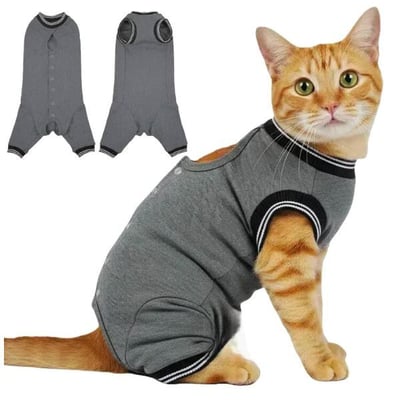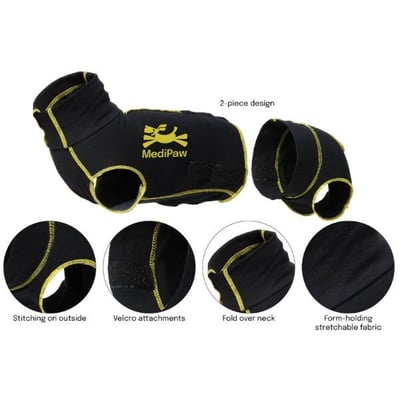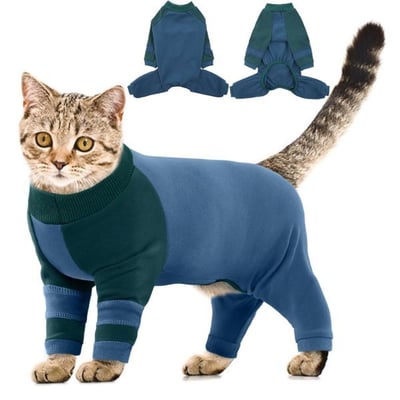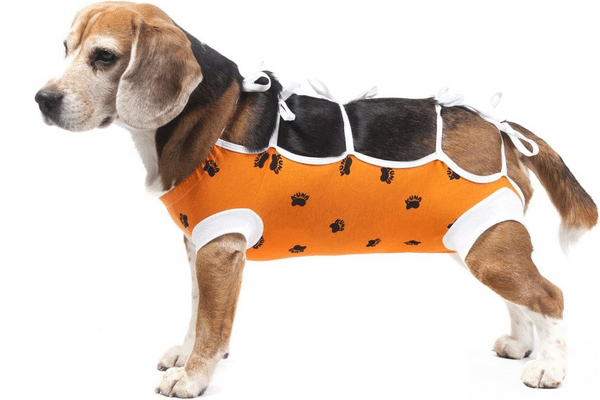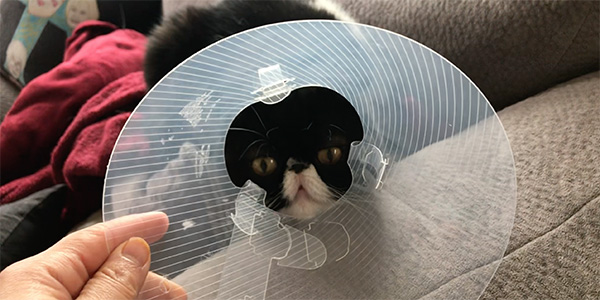 The dreaded cone of shame! Also commonly referred to as the "lampshade" or the "radar dish," but officially called the Elizabethan collar.
The dreaded cone of shame! Also commonly referred to as the "lampshade" or the "radar dish," but officially called the Elizabethan collar.
Your veterinarian might give you this super stylish Elizabethan collar to protect your cat's recent surgery site from licking and chewing.
Or they may suggest the cone if your cat is overgrooming, pulling out their fur, or chewing on their skin in a way that’s doing damage, which is often caused by stress.
The problem is that having a giant piece of hard plastic around your neck is completely unnatural if you’re a cat … or a person, for that matter. It’s stressful for them and can tear out our human hearts as we watch our little furballs struggle to manage it.
So, it’s a good idea to help your cat get comfortable with the cone before they have wear it. Even if that’s not possible — perhaps you’re dealing with an unexpected surgery — there are things you can do to make it a bit easier on your cat.
Some acclimate to wearing a cone quickly and don't seem phased at all, while others freeze or have trouble figuring out how to move around like normal. The classic plastic cone changes how they hear noises and limits their vision, which can be stressful!
And it notoriously turns into a litter scooping device if your cat is using the litterbox and can’t lift their head up high.
Why Worry About How Your Cat Handles their Cone?
Stress can affect your cat's recovery time, and it’s not great for their emotional well-being or yours. If your cat has an upcoming surgery scheduled, ask your veterinarian for a cone to use for desensitization a few weeks ahead of time.
A few minutes of training each day leading up to the surgery can help them acclimate to the cone, build positive associations with it, and give them time to learn how to do their daily routine with it on. This also gives you a chance to try out cone alternatives. We’ll have more on this later in the article.
On the other hand, if they need to start wearing one immediately, you can still work through the steps below to help introduce it in a positive way and potentially limit the added stress it causes.
Introducing Your Cat to the Cone
The plan is to very slowly introduce your cat to the cone using lots of positive rewards. If you’re starting the process before they’re required to wear the cone, you’ll do this gradually, over multiple sessions and multiple days.
The most important thing to remember is that you never want to push past your cat’s comfort zone. We don’t want to give them any reason to be wary of this thing. So, GO SLOW! And watch for even small signs of discomfort like:
- Pulling their head back
- Turning the ears to the side or back
- Fidgeting
- Twitching skin
If you see any of these signs, your cat is telling you, “Nope, not ready for that yet!” So, take a step or two back to a place where they’re relaxed again and move forward a bit more slowly.
What You'll Need:
- Cat treats* or wet food (*Use your cat's favorite ones – also called high-value treats. Many cats love Churu treats.)
- Cat toys
- The cone (You may want to spray some calming pheromones on the cone 30–60 minutes before your cat sniffs it. It helps create a calming feeling.)
As you move through each of the following steps, watch for signs of discomfort. If your cat is comfortable with a step, repeat it a few times, followed by a treat (or another reward) to build comfort and positive associations before you move to the next step.
-
This step is all about creating a positive association with the cone and acclimating your cat to a new item.
Hold the cone or place it in the general vicinity of your cat — but do not try and put it on your cat just yet. Any time your cat sniffs, touches it with their nose, or even just looks at it, offer them a cat treat or play with their toy. Watch Preventive Vet team member Mia start this process with her cat Mazel: -
Next, make the cone opening as large as possible and encourage your cat to reach through the cone to get their treat or toy (though a high-value treat will work better for this step). You may have to reach your hand toward them, through the cone, at first.
As they get more comfortable taking the treat, draw your hand back farther until they’re actually placing their head through the opening to take the treat from your hand. -
Now practice placing the cone on your cat and taking it off. Put a bit of your cat's wet food on a spoon or small wooden stick (like a tongue depressor), or give a treat from your hand to reward them for wearing it. Start by just leaving it on for a few seconds if that’s all your cat is comfortable with.
Remember, watch for the signs of discomfort (listed above). Then gradually increase the amount of time they’re in the cone. Mazel shows off his first try at wearing it in this video clip: -
If your cat seems cautious moving with the cone on, encourage them to walk around using a treat or luring them with food. Or have them follow a toy.
You can encourage your cat to move a little and access their bed and litter box while wearing the cone, to help acclimate them to the feel of the cone and how it affects their body awareness. But avoid encouraging them up onto high perches or narrow ledges. They may be on restricted activity after surgery.
And even if they aren't, climbing and jumping while wearing the cone can be dangerous if it gets caught or tangled as they mount and dismount.
Keep praising and rewarding with treats or play as your cat continues to acclimate to their cone — soon, they'll feel comfortable going about their daily business with it on. They may not love it, but they'll feel much better about it.
If You Are Rushed to Get Your Cat Used to the Cone
If you’re in a rushed situation and your cat needs the cone right away — even if they came home from the veterinary clinic wearing it — you can still spend a little time on day one helping them adjust.
Your instinct may be to remove the cone if your cat is showing signs of discomfort wearing it, but you shouldn't – that is why positive reinforcement training before having to wear a cone is so important, but I realize it's not always possible.
Because keeping the cone on is important for their health and recovery, and sometimes getting it back on if removed is near impossible, help your cat as much as possible to accept having it on. Reward them as they move around (within their limits).
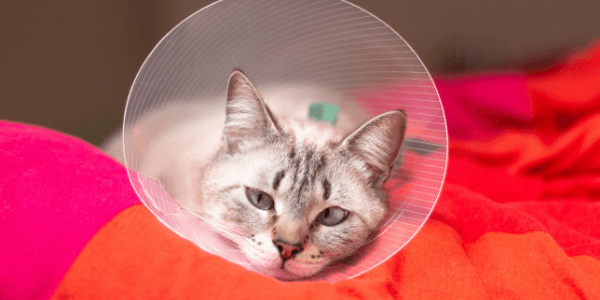
Cone Safety and Comfort
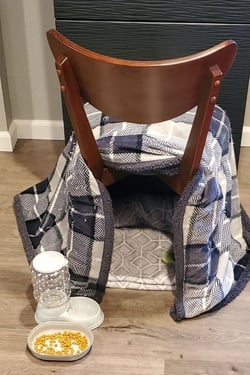
Cats determine whether they can fit through tight spaces by using their whiskers. If the whiskers fit without getting smushed, the cat will fit. Wearing the cone throws a wrench in the works, and cats can get stuck more easily.
Block off areas where this might happen (under beds and other furniture), and monitor your cat’s whereabouts while wearing a cone.
Your cat should still have plenty of hiding spots as they recover. Just make sure they’re large enough to allow for maneuvering with the cone on.
And this note is important: If they are hiding, you still need to be able to find and retrieve them to check on their wound if they have one.
A safe hiding spot is setting up clear panels with a blanket over 3 sides or even a chair, like the inset photo exemplifies – as long as your cat has room to enter with their cone on and room to turn around.
Litter Boxes While Wearing a Cone
Litter boxes can be difficult to enter and exit for your cat while wearing a cone. Hopefully, you already have a large, open litter box. If not, consider removing the lid of any covered litter boxes to make it easier on them.
If you have a cat that usually goes outdoors, you should block off their outdoor access during recovery for proper healing and safety reasons, and never let them wear an Elizabethan collar outdoors. If this seems like a good time to transition your outdoor kitty to an indoor lifestyle, see how to keep an indoor kitty entertained and happy.
Eating and Drinking
Watch to see how your cat does eating their food and drinking water while wearing their cone. You might need to offer food and water in much larger, more shallow dishes. You can even try hand-feeding them or holding their dishes up for them to eat out of while they've got their cone on. And keep a cloth handy to wipe the cone and their faces when they’re done.
Food and water will absolutely end up in and on the cone. If it gets down around the base of the cone, it can cause irritation to your cat’s neck. And remember, they won’t be able to clean those cute, furry faces. They’ll need your help with that.
For some cats, you might need to remove the cone while they eat and drink, but you need to monitor them closely to make sure they aren't fiddling around with their stitches while their cone is off. And you need your vet to show you how to get the cone back on, or if you can't, go back immediately to get your veterinary team to help.
They have seen so many tragedies and extra costs incurred from not keeping the cone on long enough. But, as all cat people know, it's heartbreaking to see your cat struggle to eat or drink (which is important!) or scoop litter into their cone when using the litter box. Do your best, this isn't always easy!
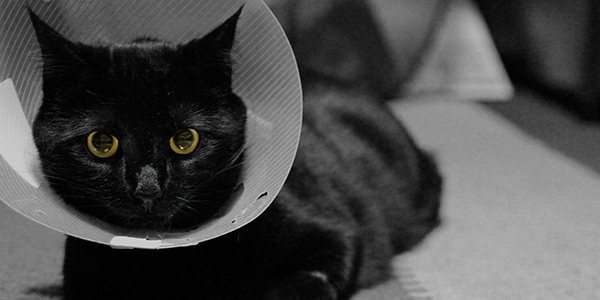 Grooming
Grooming
The cone will also keep your cat from grooming, and they'll appreciate some help with this! Brush out their coat and give them some petting and scratches. You can also help keep their coat clean by wiping them daily with some hypoallergenic pet grooming wipes.
You'll prevent matting and get some great bonding and cuddle time. (Brushing and grooming your cat has lots of other benefits too! Read our article about Tips for Brushing Your Cat and Why You Should to learn more about why it's a great habit to have.)
Cat Cone Options and Alternatives
If they’re handling the plastic cone well, but it’s just too big for them to eat, drink, and use the litter box, you can try trimming it down. But don’t remove too much length. You don't want to trim so much that they can then lick their stitches.
If your cat has a severe dislike of wearing the plastic cone, speak with your veterinarian about alternatives.
Soft, Non-Plastic Cones for Cats
If they do need the cone, you can try a soft fabric-style cone or an inflatable donut-style collar. They are often lighter than plastic cones and have more flexibility, making them more comfortable. Just make sure your cat isn’t using that flexibility to get to their incision.
Cat Recovery Suits
Some cat owners use a recovery suit for pets to keep the stitches covered! It’s vital to have a few of these so you can put one on while the others are in the wash. They have to stay clean, as incision sites can get gooey.
And while they have an opening for peeing and pooping, the back end can get messy, too. Also, ask your veterinarian if you should remove the suit for supervised periods to let the incision breathe.
If you want to try a recovery suit, follow a similar approach to getting your cat comfortable in it. Start with it off, let them sniff it, drape it on their back a few times, encourage them to put their head through the neck opening, etc., until they're wearing it. And reward each step in the right direction.
If you are going to use a recovery suit, our vet team recommends pairing it with one of the soft cones above, especially when you leave home or your cat is unsupervised. Some cats can chew through the suit and hurt the surgical site.
 A suit that is appropriate for abdominal wounds
A suit that is appropriate for abdominal wounds
Recovery suit appropriate for abdominal wounds
Medipaw's recovery suit is 2 pieces that can be easier to put on and take off.
It also has internal pockets on the top and bottom that can hold ice packs.
It offers full torso and rear coverage.
Full body coverage with this suit.
These recovery suits (also called surgery suits) can work well to stop licking. But they don’t do much to stop chewing, or even worse, scratching. If the incision can be reached by the back feet, you might need to talk to your veterinarian about alternatives because even the cone can’t keep those back murder mitts at bay.
See how I made a custom suit using a bra pad and a T-shirt, with the surgeon's OK, for a cat I was fostering that needed her front leg amputated.
Cat Booties
If scratching the surgical site with their paws is a concern, you can add booties to their "outfit." Remember, your cat should be confined while recovering so they won't need the dexterity to climb or jump, which can cause the surgical site to open up.
Here are two boot brands our veterinary team recommends:
Smarthing Waterproof, Anti-Slip Booties
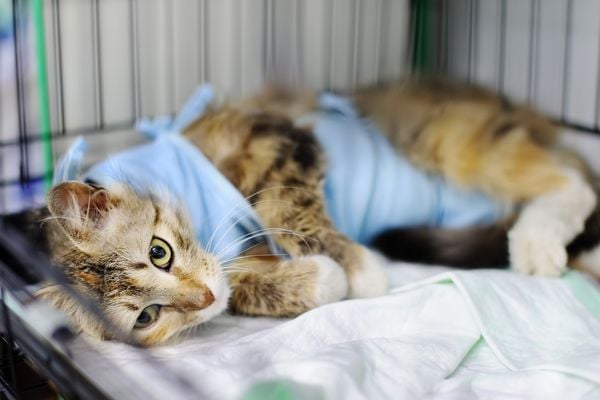
With a little bit of introduction to the cone and lots of positive association, your cat will likely be less stressed and not mind wearing that lovely lampshade while they recover. And that extra prep time gives you a chance to test out alternatives, just in case.
Let us know how your cat does wearing their cone in the comments below.



